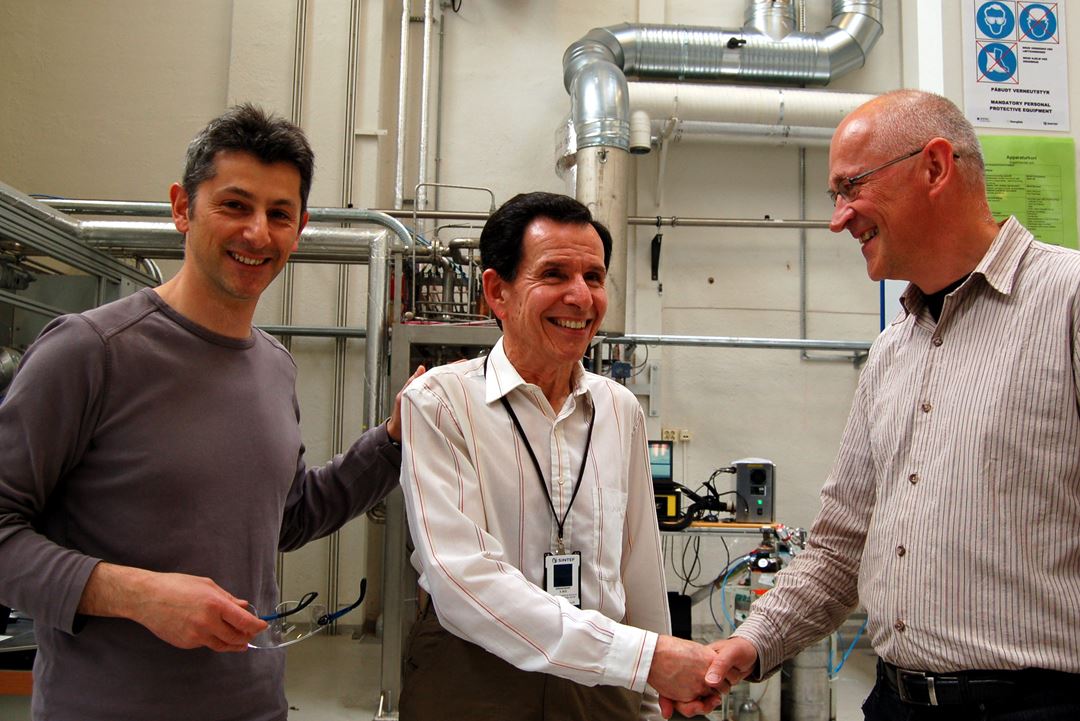Sannan is clearly proud that Dr. Alan Kerstein is joining the team at SINTEF Energy Research.
Dr. Kerstein, a specialist in combustion technology, recently retired from his position at Sandia National Laboratories in California after 35 years at the world-famous institute.
Now, the veteran scientist will dedicate 25 per cent of his time for the next four years to consulting for SINTEF Energy Research.
His tasks at SINTEF will include contributing to two national research centres for environmentally friendly energy (FMEs in their Norwegian acronym) – national “energy teams” set up by the Research Council of Norway, which is financing Kerstein’s appointment via its RENERGI Programme.
Both biofuels and carbon capture and storage (CCS)
As Dr. Sigurd Sannan puts it, the American researcher is a member of the absolute elite of global combustion scientists.
“He will be an important resource in our research on biofuels and on energy generation from hydrogen-rich hydrocarbon gases – an important field in connection with CCS, “says SINTEF’s Sannan.
Old acquaintances
Dr. Kerstein is the father of two numerical modelling tools in everyday use in combustion research all over the world.
Both Sannan himself and many of his Energy Research colleagues have been collaborating closely with Alan Kerstein and his group at Sandia for several years, and SINTEF has recently renewed its memorandum of understanding with Sandia for a further five-year period.
Important institute
Sandia National Laboratories is an important energy and nuclear engineering research facility operated on behalf of the US Department of Energy.
The institute is so strategically vital for the USA that only half of its employees were allowed to report for work in the aftermath of September 11, 2001. Because of the fear that the whole institute might be destroyed by a repeat of the airborne attacks, the other half of its staff was ordered to work at home.
Praise for Norway’s FME efforts
Dr. Kerstein says that he is looking forward to reinforcing his long-standing contact with SINTEF, and he mentions in particular future collaboration with BIGCCS and CENBIO, two of the Research Council’s Centres for research on environmentally friendly energy.
“The researchers themselves at these centres are responsible both for the quality of their own research and for its relevance to its fields of application. Forging links with industry also ensures that the centres concentrate on research that is commercially realistic, which also makes very good sense,” says Kerstein.
Norway and Germany
Twice a year, in spring and autumn, Dr. Kerstein will spend three or four weeks in Norway. The American scientist has a similar agreement with the Brandenburgische Technische Universität (BTU) in Cottbus in Germany.
The importance of exchanges
Special consultant Trygve Riis of the Research Council of Norway says that, to the best of his knowledge, this is the first time that the Council has gone in and supported this type of researcher exchange, at least in the field of energy research.
“The project is about transferring the expertise of an internationally recognised expert to Norway. We want to contribute to international collaboration, and personnel exchanges are essential in this respect,” says Riis.
By Svein Tønseth

